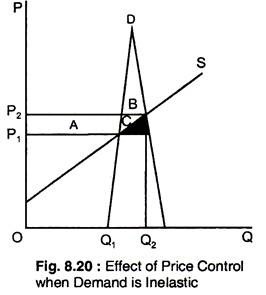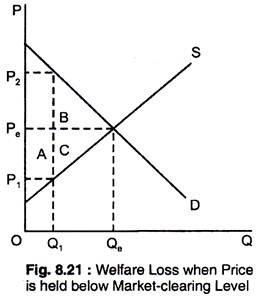The below mentioned article provides quick notes on efficiency of a competitive market.
We have seen that price controls create a deadweight loss when the government wants that a price would be below the market-clearing price, economic efficiency is reduced. It does not mean that such a policy is bad; it may achieve objectives that policy-makers and the public think are important.
However, there is an efficiency cost to such a policy — taken together, producers’ and consumers’ surplus are reduced by the amount of the deadweight loss.
One might think that if the only objective is to achieve economic efficiency, a competitive market should be left alone. This is not always the case. In two situations government intervention can increase the total welfare in an otherwise competitive market.
ADVERTISEMENTS:
The first is when the actions of either consumers or producers result in costs or benefits that do not show up as part of the market price. Such benefits and costs are called externalities. For example, the cost to the society of environment pollution by a producer. Without government intervention, such a producer will have no incentive to consider the social cost of pollution.
Market failure is the second situation in which government intervention can improve the outcome of a freely competitive market. Market failure means that prices fail to provide the proper signals to consumers and producers, so that market does not operate as we have described it.
Without these two cases, an unregulated competitive market does lead to economically efficient production level. Now, let us consider what happens if price is constrained to be either below or above the equilibrium market-clearing price. We have already examined the effect of a price-ceiling.
Production falls leading to a corresponding loss of total surplus. Too little is produced, and consumers and producers are, on the whole, worse-off. Welfare loss occurs when price is held below market-clearing levels as Fig. 8.20 shows when price is kept at P1, the deadweight loss of B + C results.
When price is held above market-clearing level, welfare loss results, as Fig. 8.21 shows. When price is regulated to be not lower than P2 only Q3 amount will be demanded. If Q3 is produced, the deadweight loss is given by the triangles B + C. At price P2, producers would like to produce more than Q3 say Q2. If they do, the deadweight loss will be even larger.

